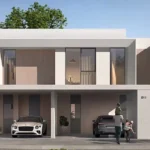Now Reading: Living in Sharjah: Pros & Cons in 2025
-
01
Living in Sharjah: Pros & Cons in 2025
Living in Sharjah: Pros & Cons in 2025

Table of Contents
Sharjah, the UAE’s third-largest emirate, is a cultural and economic hub contributing to the nation’s AED 893 billion real estate market, which recorded 331,300 transactions in 2024. As of June 2, 2025, at 1:20 PM IST, Sharjah’s property market offers affordability, with 7–9% rental yields and 5–7% price growth, per Bayut. Home to 1.8 million residents (70% expats), Sharjah balances tradition and modernity, driven by the Sharjah 2030 Vision and projects like the AED 24 billion Aljada development. This guide explores the pros and cons of living in Sharjah in 2025, focusing on lifestyle, costs, amenities, and connectivity, while integrating your interest in smart homes and UAE property trends.
- Market: AED 893B UAE real estate in 2024, Sharjah with 7–9% yields, 5–7% growth.
- Context: 1.8M residents, 70% expats, Sharjah 2030 Vision, AED 24B Aljada project.
- Focus: Pros and cons of living in Sharjah, lifestyle, costs, amenities, connectivity.
- Relevance: Tailored for families, expats, and investors, with smart home insights.
Pros of Living in Sharjah

1. Affordability
- Housing Costs:
- Rent: 1-bed apartments AED 30K–50K/year; 3-bed villas AED 80K–120K/year, 30–50% cheaper than Dubai, per Property Finder.
- Buy: 1-bed apartments AED 500K–800K; 3-bed villas AED 1.2M–2M, half Dubai’s prices.
- Example: AED 40K/year Aljada 1-bed vs. AED 70K/year JVC (Dubai).
- Living Expenses: Lower utility costs (AED 8K–15K/year for apartments), affordable dining (AED 20–50/meal), and no personal income tax.
- Benefit: Budget-friendly for families, young professionals, and investors, with 7–9% rental yields.
2. Family-Friendly Environment
- Education: 100+ schools, including Victoria International, Sharjah English School, and AUS (top-ranked university), per KHDA.
- Amenities: Parks (Al Majaz Waterfront, Al Noor Island), family events, and community centers in Aljada, Tilal City.
- Safety: Low crime rate, family-oriented culture, and pedestrian-friendly areas like Al Nahda.
- Benefit: Ideal for raising children, with 80% of residents rating Sharjah as safe, per a 2024 Bayut survey.
3. Cultural and Historical Appeal

- Heritage: Sharjah, UNESCO’s 1998 Cultural Capital, hosts museums (Sharjah Museum of Islamic Civilization), festivals (Sharjah Biennial), and heritage areas (Heart of Sharjah).
- Community: Diverse expat population (Indian, Pakistani, Arab), fostering inclusivity.
- Benefit: Enriches lifestyle for culture enthusiasts, with free or low-cost events (AED 10–50/ticket).
4. Proximity to Dubai
- Commute: 20–40 min to Dubai via E311, E611 highways; 15 min to DXB Airport from Al Nahda.
- Access: Close to Dubai’s job hubs (DIFC, Business Bay), with Sharjah’s industrial zones (SAIF Zone) adding local opportunities.
- Benefit: Residents enjoy Sharjah’s affordability while working or socializing in Dubai, saving AED 20K–50K/year on rent.
5. Modern Developments with Smart Features

- Projects: Aljada (AED 24B, 70,000 residents), Masaar (forest-inspired), and Tilal City offer smart homes with IoT lighting, thermostats, saving 10–15% on utilities, aligning with your interest.
- Example: AED 800K Aljada 2-bed with smart systems yields AED 60K/year.
- Sustainability: LEED-certified buildings in Aljada, Masaar reduce carbon footprint, per Arada.
- Benefit: Modern, eco-friendly living with investment potential (15% off-plan appreciation).
6. Growing Infrastructure
- Transport: Expanded bus routes (e.g., Sharjah to Dubai), upcoming rail links (Etihad Rail phase 2, 2026), and Sharjah International Airport.
- Amenities: Mega malls (City Centre Sharjah, Zero 6), healthcare (Al Qassimi Hospital), and new schools in Aljada.
- Benefit: Enhances convenience, with 20% infrastructure growth since 2023, per Sharjah Investment Authority.
Cons of Living in Sharjah
1. Stricter Cultural Norms
- Regulations: Conservative dress code (e.g., modest clothing in public), alcohol restrictions (no bars, limited licenses), and public behavior rules (e.g., no PDA), per Sharjah Municipality.
- Impact: May feel restrictive for expats used to Dubai’s liberal lifestyle, with fines up to AED 5,000 for violations.
- Mitigation: Adapt to local norms, visit Dubai for nightlife (30 min drive).
2. Limited Public Transport
- Issue: Reliance on buses (e.g., lines 14, 15 to Dubai), no metro, and taxis (AED 20–50/trip to Dubai), per SRTIP.
- Impact: Car ownership (AED 30K–50K used) often necessary, adding AED 10K–20K/year in fuel, maintenance.
- Mitigation: Use bus passes (AED 80/month), carpool, or await Etihad Rail (2026).
3. Traffic Congestion
- Issue: Peak-hour traffic on E311 to Dubai (30–60 min), especially from Al Nahda, Al Taawun, per Google Maps data.
- Impact: Commutes extend workdays, reducing family time; 25% of residents report delays, per a 2024 Bayut survey.
- Mitigation: Choose Aljada, Tilal City (closer to E611), or remote work options.
4. Fewer Entertainment Options
- Issue: Limited nightlife, cinemas (Vox, Novo), and luxury dining compared to Dubai’s 650+ venues, per Visit Dubai.
- Impact: Residents travel to Dubai for entertainment (AED 50–100/trip), less vibrant for young professionals.
- Mitigation: Explore Sharjah’s cultural events, Al Majaz Waterfront, or Zero 6 Mall.
5. Developing Infrastructure in New Areas
- Issue: Emerging communities like Aljada, Masaar lack completed amenities (e.g., malls, schools opening 2026–2027), per Arada.
- Impact: Inconvenience for early residents, reliance on Al Nahda, Muwaileh for retail.
- Mitigation: Opt for established areas (Al Nahda, Al Majaz) or wait for Aljada’s Central Hub (2026).
6. Hot Climate
- Issue: Summer temperatures (40–45°C, May–September) limit outdoor activities, with AC costs AED 5K–10K/season, per SEWA.
- Impact: Higher utility bills, reduced park usage for families.
- Mitigation: Choose smart homes in Aljada, Masaar with energy-efficient systems, visit indoor venues (Sharjah Aquarium).
Cost of Living in Sharjah
| Category | Cost (AED/year) | Notes |
|---|---|---|
| Rent (1-bed) | 30K–50K | Aljada, Al Nahda |
| Rent (3-bed villa) | 80K–120K | Tilal City, Masaar |
| Utilities | 8K–15K | Lower with smart homes |
| Groceries | 12K–18K | Carrefour, local markets |
| Transport | 10K–20K | Bus or car |
| School Fees | 20K–50K | International curricula |
| Total (Family of 4) | 100K–200K | 30–40% less than Dubai |
Top Communities for Families
- Aljada:
- Rent: 1-bed AED 30K–50K/year; 3-bed villas AED 80K–120K.
- Buy: 1-bed AED 500K–800K; 3-bed villas AED 1.2M–2M, 7.5–8% yields.
- Features: Smart homes, Central Hub, schools (2026), parks.
- Why: Affordable, 20 min to Dubai, eco-friendly.
- Al Nahda:
- Rent: 1-bed AED 35K–50K/year; 2-bed AED 50K–80K.
- Buy: 1-bed AED 600K–800K, 7–8% yields.
- Features: Schools (Delhi Private School), Sahara Centre, Al Nahda Pond Park.
- Why: Established, near DXB Airport.
- Masaar:
- Rent: 2-bed AED 50K–80K/year; 3-bed townhouses AED 100K–120K.
- Buy: 2-bed AED 800K–1.2M; 3-bed AED 1.5M–2M, 6.5–7% yields.
- Features: Forest-inspired, smart systems, cycling tracks.
- Why: Sustainable, family-friendly.
- Muwaileh:
- Rent: 1-bed AED 30K–40K/year; 2-bed AED 45K–70K.
- Buy: 1-bed AED 500K–700K, 7–8% yields.
- Features: Muwaileh Commercial District, schools, parks.
- Why: Budget-friendly, near University City.
Challenges and Mitigations
- Cultural Restrictions:
- Challenge: Modest dress, no alcohol in public.
- Mitigation: Respect local laws, visit Dubai for liberal venues.
- Transport Limitations:
- Challenge: No metro, bus-dependent.
- Mitigation: Use affordable buses, budget for a car (AED 30K used).
- Traffic:
- Challenge: E311 congestion to Dubai.
- Mitigation: Live in Aljada, use E611, or work locally (SAIF Zone).
- Emerging Areas:
- Challenge: Aljada, Masaar amenities incomplete.
- Mitigation: Choose Al Nahda, Muwaileh for established facilities.
Recommendations for 2025
- Budget Renters:
- Action: Rent a 1-bed in Muwaileh (AED 30K–40K/year) or Al Nahda (AED 35K–50K) via Bayut.
- Example: AED 40K Muwaileh 1-bed, near retail.
- Rationale: Low cost, urban access.
- Family Renters:
- Action: Rent a 3-bed villa in Aljada (AED 80K–120K) or Masaar (AED 100K–120K).
- Example: AED 100K Aljada villa, near parks.
- Rationale: Family-friendly, smart homes.
- Budget Buyers:
- Action: Buy a 1-bed in Aljada (AED 500K–800K) or Muwaileh (AED 500K–700K) via Arada.
- Example: AED 600K Aljada 1-bed yields AED 48K/year.
- Rationale: High yields, affordability.
- Family Buyers:
- Action: Purchase a 3-bed villa in Masaar (AED 1.5M–2M) or Tilal City (AED 1.2M–1.8M).
- Example: AED 1.5M Masaar villa yields AED 105K/year.
- Rationale: Sustainable, spacious.
- Smart Home Seekers:
- Action: Invest in IoT-enabled homes in Aljada or Masaar (AED 10K–20K upgrades).
- Example: AED 800K Aljada 2-bed with smart systems yields AED 60K/year.
- Rationale: Aligns with your interest, 10–15% utility savings.
- Due Diligence:
- Action: Verify fees via Sharjah Municipality, check developers (Arada, Tilal) via RERA, use brokers (e.g., Loam).
- Example: Confirm AED 5K–10K/year service fees for AED 1M villa.
- Rationale: Avoids hidden costs.
Conclusion
living in Sharjah offers affordability (rent AED 30K–120K/year, buy AED 500K–2M), family-friendly communities, and cultural richness, with smart homes in Aljada and Masaar saving 10–15% on utilities. Proximity to Dubai, 7–9% yields, and growing infrastructure make it appealing for expats and families. However, stricter norms, limited transport, and traffic require adaptation, mitigated by choosing established areas (Al Nahda) or upcoming rail links. In Sharjah’s evolving market, strategic choices ensure a rewarding lifestyle in 2025. watch more
read more: Top Waterfront Properties in the UAE



















